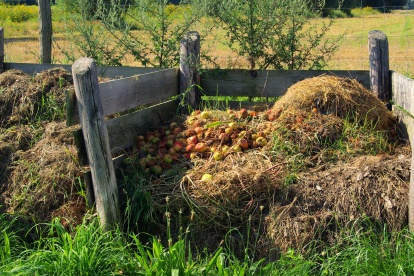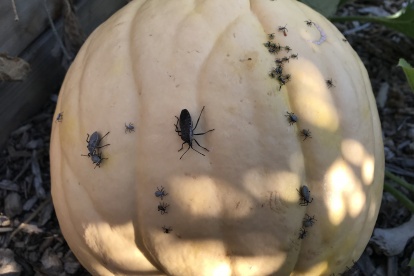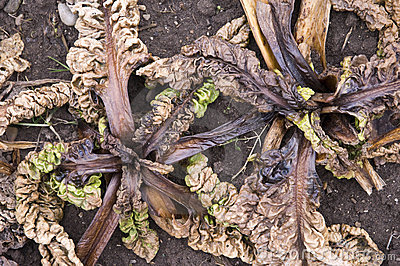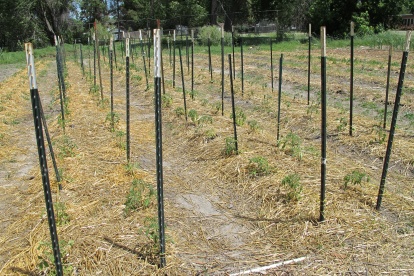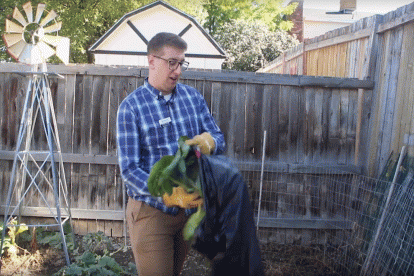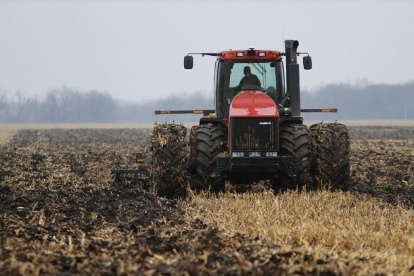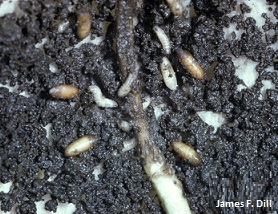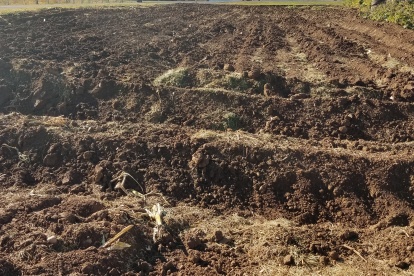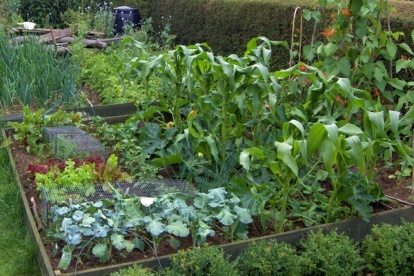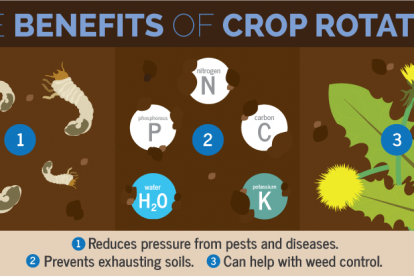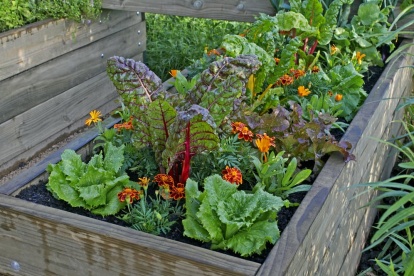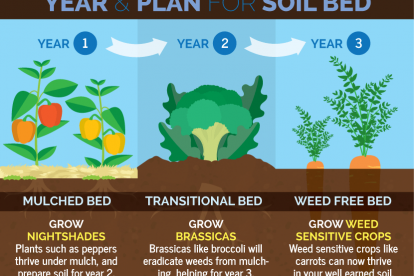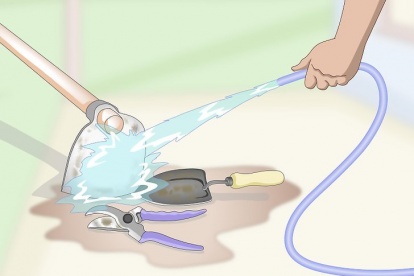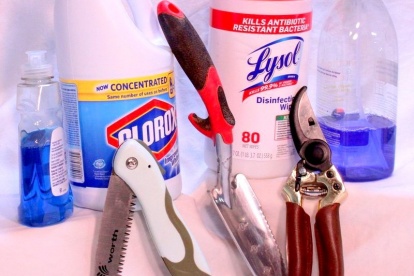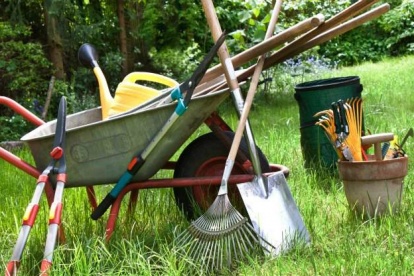In this issue:
- Plant Debris Removal
- Crop Rotation
- Soil Management
- Equipment Sanitation
Plant Debris Removal
- If you let plant debris or residue stand, you’re allowing for the possibility of all sorts of problems next season.
Plant debris can harbor different fungal blights or overwintering insects. - This can include squash bugs, which will overwinter in the adult stage underneath the plant residue, woodpiles, or other trash in the site. The squash bugs will emerge in southern Utah around April and May in northern Utah.
- Sanitation will also help prevent diseases such as powdery mildew which is a fungus that overwinters in fruiting structures on plant debris. When temperatures warm in the late spring, a secondary spore (conidia) forms and blows to new leaf tissue and cause infection.
- Most plant material is fine to be composted when broken down, however, plant debris that you know was infested by insects or disease should be put in a trash bag and discarded. Another option is to burn the plant material or dig a shallow trench and bury it with a thin layer of soil.
- Rotting fruit on the ground can attract vertebrate pests which may be a problem already.
- Complete one final weeding in your garden. Any weeds left in your garden will go to seed and produce many more weeds next season.
- Remove stakes, row covers, irrigation line, and other man-made objects. Black plastic and other inorganic mulches will not decompose and if left place, will provide overwintering sites for some pests.
Soil Management
- Providing a favorable soil environment encourages the growth of healthy roots, increases access to water and nutrients, prevents stress, which ultimately makes the plant more resistant to pests and diseases compared to plants in poor soil.
- A lot of common insect pests overwinter in the soil during their pupae stage. This can include seed, root, and bulb maggots and various leaf miner species. Several caterpillar pests also pupate in the soil.
- A rotary tiller is an excellent tool for incorporating soil amendments and organic matter into vegetable gardens. However, excessive tilling year after year, can damage soil structure and diminish the benefits of organic matter.
- Alternative methods include raking and evening the surface or using a shovel to “turn over” main parts of the surface. Both ways can expose overwintering pupae.
Crop Rotation
- An important thing to consider for your garden next season is crop rotation. Crop rotation is one of agriculture’s oldest cultural practices. In a home vegetable garden, crop rotation involves changing the planting location of a specific crop within the garden each season. Crop rotation reduces damage from insect pests, limits vegetable disease development, and helps manage soil fertility.
- Vegetables in the same plant family grown in the same spot annually will provide insect pests with a reliable food source and pathogens a continual infection source. This can allow their populations to build up and strengthen over time.
- For example eggplants, peppers, potatoes, and tomatoes are all part of the Solanaceae family. Early blight is a fungus that can affect these crops. It survives in plant debris in the soil (which is its main source of inoculum) and on seeds. This disease can be best prevented by crop rotation.
- An example of an insect pest that can be controlled by crop rotation is the imported cabbageworm which can cause damage to cole crops such as broccoli, cabbage, and cauliflower. Imported cabbage worms overwinter in their pupae stage in the soil near plant debris. So rotate your crops and distance susceptible hosts as much as possible.
Equipment Sanitation
- Disinfecting and sterilizing your garden and other horticultural tools is a great way to prevent disease-causing pathogens from spreading in your site both during a growing season and in between.
- Clean your tools (shovels, pruners, trowels, rakes, etc.) by physically washing off the soil and debris. If your equipment has rust, be sure to remove that as well.
- Disinfect by using a 10% bleach solution and allowing the equipment to soak. Then dry them off with a towel.

